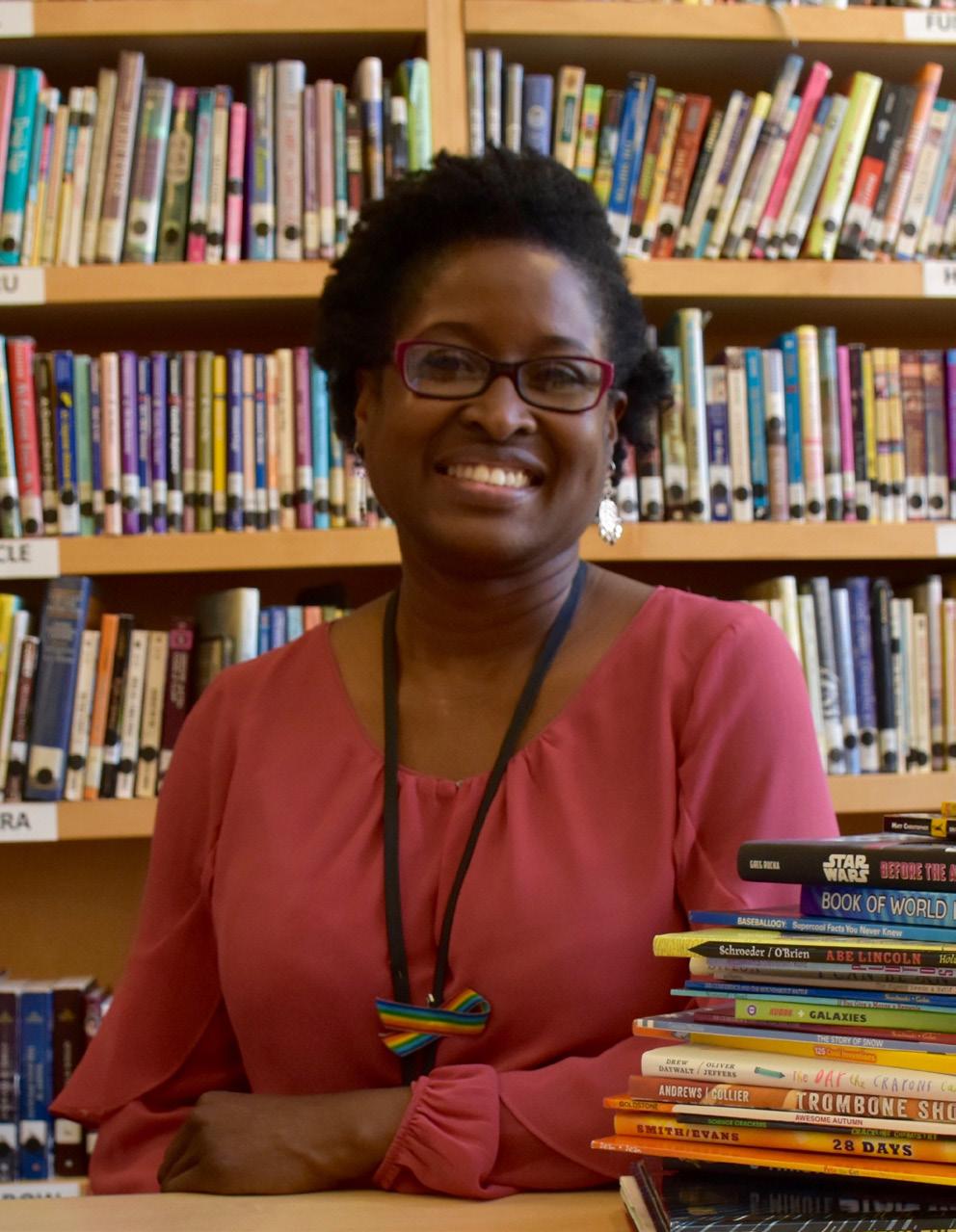
4 minute read
RACIAL LITERACY WITH VOGELSANG
Parents Explore Racial Literacy Issues with Pollyanna’s Monique Vogelsang
On Tuesday, December 15, Gaynor parents, faculty, and staff tuned in to a special Diversity, Equity, and Inclusion webinar.
The Parents’ Association Diversity, Equity, and Inclusion (DEI) Committee, co-chaired by Kathy Yang and Nina Norwood, invited Pollyanna Curriculum Specialist Monique Vogelsang to help the parent community expand their racial literacy and provide tools for navigating future conversations about race at home.
The presentation was titled “Racial Literacy 101: Connecting the Classroom to Home Through the Power of Language,” and 50 people tuned in on Zoom to watch Ms. Vogelsang’s presentation and discussion.
This isn’t Ms. Vogelsang’s first time working with Gaynor on DEI initiatives. This fall, she worked closely with Gaynor faculty and staff to help carefully and thoughtfully develop Gaynor’s Racial Literacy Curriculum. With the guidance of Ms. Vogelsang, and informed by Pollyanna and other expert sources, Gaynor launched the curriculum in September.
The evening began with Head of School Dr. Scott Gaynor saying a few words before introducing PA President Megan Hogan.
“Your attendance tonight is a wonderful example of the importance of the community effort in making sure that DEI work stays at the forefront, and that we continue to take action and make progress,” Dr. Gaynor said.
Ms. Hogan then talked about the importance of the evening and introduced Ms. Vogelsang. “Tonight’s presentation is really in response to a lot of reach out that I think all of us [in the Parents’ Association] received after our introduction a couple of months ago to say, ‘I really want to make sure I’m connecting the dots between what my student is learning in school and what we want to talk about during dinner or the weekends,’” she said.
After her introduction, Ms. Vogelsang joined the webinar and greeted the Gaynor community. She gave an overview of what to expect from the evening and the goals.
“We’re here because of your children and because we’re really aiming to keep students and equity at the center of what we do,” she said. She explained that her remarks would be “anchored in the idea of racial literacy, the importance of expanding our awareness, thinking about the language that’s being used at school, [and] how to bridge the conversation from school to home.”
She then went on to read Gaynor’s mission statement and DEI statement, saying that the idea of recognizing and creating a diverse and inclusive environment is embedded in these statements.
“The language is there,” Ms. Vogelsang said. “I think this is something that we’re aiming to cultivate. Promoting, advocating, and celebrating as part of what we’re doing in the classroom, which is really sound pedagogy. This is all part of the work of diversity, equity, and inclusion, and I would say racial literacy is a core tenet of that.”
During the presentation, Ms. Vogelsang reviewed language and frameworks that promote racial equity.

She discussed what racial literacy is, why there is a need to enhance our racial literacy/awareness, what is and is not race, and seeing things with a "both/and" lens.
Ms. Vogelsang then talked about racial literacy in the classroom, and bridging the gap between what’s discussed in the classroom and at home.
“I will say there’s not one way to have a conversation about race and/or racism, there are many ways,” she said. “I think there are many ways to affirm our children, our students for who they are, and sometimes there are ways that don’t affirm them, and sometimes there are conversations that can cause harm. In that way, we have to think about how we have these conversations in a way that’s anchored in a shared humanity and recognizes our differences ultimately as strengths.”
She gave a few different approaches, as well as resources both for adults and children. One resource for children was Lee & Low Books, which is the largest multicultural publisher in the United States. Books are broken down by grade level and cultures, and are recommended as a good source for building an at-home library.
After the presentation, Ms. Vogelsang went through a few different scenarios and opened the floor up for group discussion, as well as a Q&A.
One scenario asked if anyone would say something to an adult who says something problematic such as, “I don’t see color,” or “Racism is a thing of the past.”
Ms. Hogan said that she would educate the person on the harm that comes with those words. “When people don’t see color, they don’t see me,” she said. “It seems to diminish my identity by someone saying, ‘Well I don’t think of you as Black.’ Well I do, so it’s important for you to make sure that as you think about your perception of me, that my perception actually comes first, which is asking me questions about how I perceive my identity, how I identify, what those identifying characteristics are, what those impacts are on me, as opposed to saying, ‘I don’t see gender, I don’t see color, so what’s the big deal?’”
Closing out the webinar, Ms. Vogelsang said ultimately, the goal of this work is to enhance awareness, to teach love of self and others, and to approach and see the world and ourselves with complexity, nuance, and depth.
“I think language is a big piece of this, and the language we use can promote exclusion, unfortunately, or promote inclusion, and really the goal in our racial literacy program is to employ a nuanced, intersectional, positive, racially diverse, and rehumanizing lens,” she said. “The work I do, the three big things I keep in mind for my values are to cultivate truth, cultivate a sense of community, and as much as possible, cultivate a sense of joy.”










